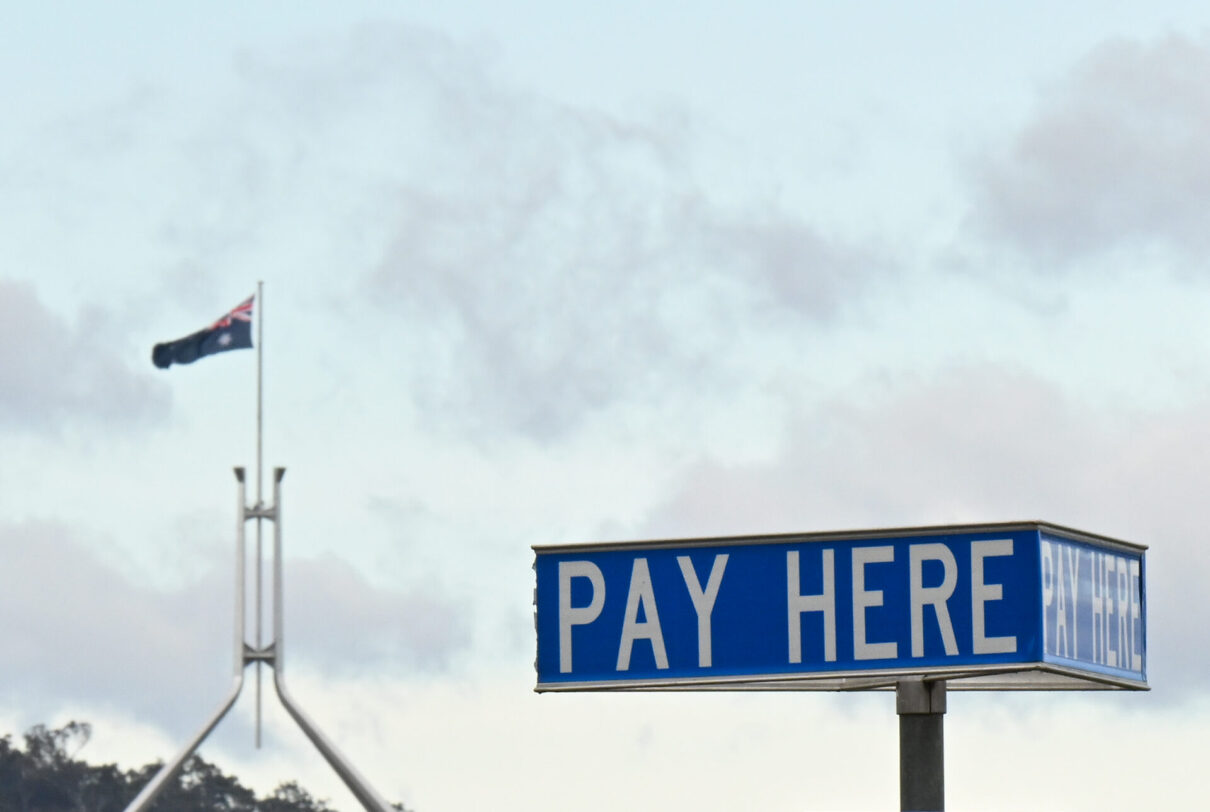Six ways the government can reduce inflation in next week’s budget

It is often said that the only way to reduce inflation is by higher interest rates. That’s not true – the government can also reduce inflation and cost of living pressures
Too often we are told by economists that the only way to reduce inflation is by the Reserve Bank hiking interest rates. But this ignores that the government can actually reduce the prices and costs of many items and services.
We know this is true because it has happened before!
Just last year the Treasurer, Jim Chalmers, said when the government increased the childcare subsidy
What we’ve tried to do is to provide cost of living relief in a number of areas so that we can make things a little bit easier. Cheaper childcare will make life easier for a lot of families in a way that doesn’t add substantially to the inflation challenge in our economy.
Over the last year, the government has continued to provide cost of living relief that also reduces inflation. Inflation (measured by the Consumer Price Index) is the change in prices of goods and services paid by people. The government has control over many prices in the economy. For example, the price of university degrees or medicines listed on the Pharmaceutical Benefits Scheme (PBS). Lowering these prices not only directly reduces inflation but also provides cost of living relief for those who now have to pay less.
Here is a list of 6 inflation-busting ideas for the upcoming budget that would also provide cost of living relief.
Childcare
Childcare has huge social and economic benefits. High-quality childcare improves the educational outcomes for children. But low-cost or free high-quality childcare also increases labour force participation by providing parents the opportunity to return to work. Childcare is also a growing cost to families. $100 worth of child care in 2000-01 would now cost families $209. But this need not be the case.
In July 2023 the government increased the Childcare subsidy. This saw a fall of 13.2% in the cost of childcare in the September 2023 quarter. Without the increase in the subsidy, childcare prices would have increased 6.7%.
The government could go further in this year’s budget. By increasing the subsidy or even making childcare free, the government could help the stretched budgets of young families and help reduce inflation. We know this is possible because it has already been done! When the Morrison Government briefly made childcare free during the COVID pandemic in 2020 (as shown in the above graph), that one act alone reduced total inflation by over 1% for that quarter.
Rents
Rents have been one of the largest pain points for many Australians. They have been rapidly increasing. Over the last 12 months they have increased by 7.8%, this is the strongest increase in rents for 15 years. But the increase could have been much more.
The government provides Commonwealth Rent Assistance (CRA) to low-income renters. In September 2023 the maximum rate of CRA was increased by 15%. This not only helped low-income renters, but it also reduced the impact rising rents had on the CPI. Without the increase in the CRA, rents would have increased by 9.5%.
Another round of large increases to CRA in this year’s budget would further assist stretched renters and help bring inflation down.
Medicine
At the beginning of 2023, the government reduced the non-concessional co-payment. This meant that the maximum amount a patient would have to pay for a prescribed medication on the Pharmaceutical Benefit Scheme (PBS) fell from $42.50 to $30. This reduced the healthcare costs of many Australians, especially those with complex needs.
But it not only provided cost of living relief it also reduced inflation with pharmaceutical products increasing 4.5% rather than 6.4%.
Electricity
High electricity prices are often sighted by households as causing financial stress. But a combination of federal, state, and territory energy relief subsidies have meant that low-income households have not faced big increases to their electricity bills. This has provided much needed cost of living relief but also directly impacted the CPI.
In the September quarter of 2023 electricity prices increased by 4.1%. But without the energy bill relief it would have increased by 18.6%.
Bulk billing
Over the last few decades it has become harder and harder to find a doctor that will bulk bill for a medical consultation. This means Australians are paying more to see a doctor. In last years budget the government introduced some modest incentives to encourage more doctors to bulk bill. This has seen a small increase in bulk billing rates, and this has the effect of reducing Australians medical bills providing cost of living relief and putting downward pressure on inflation.
The Medical Benefits Schedule (MBS) sets out how much doctors get paid by the government to provide services to patients. For the best part of a decade indexation of the MBS was frozen. This forced many doctors to stop bulk billing. In this year’s budget the government could restore the lost funding from the frozen indexation to the MBS. Linking this to bulk billing would have a much bigger impact on bulk billing rates. This would mean more Australians could see the doctor for free, reducing their medical bills and at the same time pushing down the inflation rate.
University and TAFE fees
The Morrison government pushed through changes to university fees that had an overall effect of increasing the price of degrees. This has not only slugged many university students with higher fees but also showed up as a large increase in the cost of tertiary education in the CPI. In 2022 just as the spike in inflation was kicking off, tertiary education increased by 6.3%, followed by 9.7% in 2023. Reversing these fee increases would mean cost of living relief for university students and a reduction in the CPI.
Both the current Labor Government and the previous Coalition Government have increased the number of fee free TAFE places. Expanding this further or even moving to a system where all TAFE and University places are free would help students and push down inflation.
Conclusion
Inflation is too often presented as a problem only for the Reserve Bank to solve. But these 6 ideas show the government also can greatly affect the price that people pay. And because these 6 ideas are for essential services and goods, they will benefit most those on low to middle incomes whose savings buffers have been destroyed over the past two years from prices soaring while incomes have lagged behind.
Between the Lines Newsletter
The biggest stories and the best analysis from the team at the Australia Institute, delivered to your inbox every fortnight.
You might also like
Would you like a recession with that? New Zealand shows the danger of high interest rates
New Zealand’s central bank raised interest rates more than Australia and went into a recession – twice.
Corporate profits increase inflation | Fact Sheet
The prices of many goods and services have increased dramatically across Australia since 2021. This has resulted in hardship for many households—along with $100 billion in increased profits for major companies. These corporate profits have been a key factor driving inflation.
If business groups had their way, workers on the minimum wage would now be $160 a week worse off
Had the Fair Work Commission taken the advice of business groups, Australia lowest paid would now earn $160 less a week.



